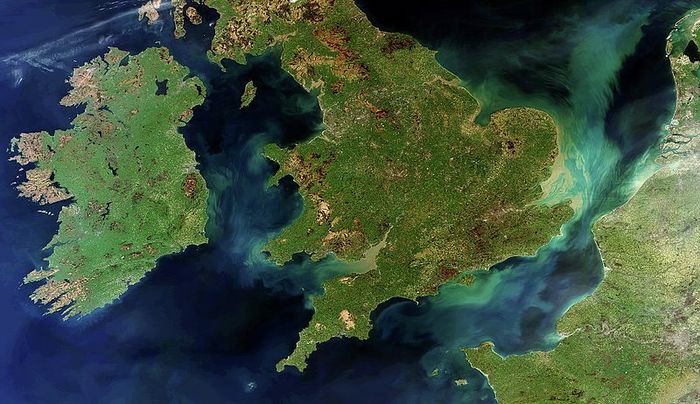Space: Much Ado About Nothing?
Eloise Matthews paints a picture of space and space exploration that is worth caring about, both for understanding where we came from and where we might be going.
“Keep your eyes on the stars, but your feet on the ground”, albeit in varying forms, was President Roosevelt’s advice to the American people with a message to have high aspirations but remain rooted in reality. However, with such great increases in scientific understanding and technological advancements since the early 1900s, having our feet amongst the stars and eyes back on the Earth is becoming ever more a reality with continually expanding ambitions.
Space exploration feeds human curiosity. Certainly, whatever your level of understanding, there are plenty of things to be curious about on Earth. In fact, curiosity has an evolutionary significance: it prompts the trialling of new behaviours which may become adapted into our way of life depending on their success. Humankind’s natural fascination with outer space, maintained over thousands of years and across multiple cultures, may signify that space plays an important role in the course of humanity. Indeed, SpaceX, a privately funded spacecraft company, considers the expansion of the human race to other planets to be the next key progression in evolutionary history, following other steps from multicellularity to the beginnings of development of industry and technology. It is therefore fitting that the Mars rover, operated by NASA, is called Curiosity, illustrating the desire of humankind to learn more about other worlds.
More missions have been sent to Mars than anywhere else in the Solar System: its proximity and geological similarity to Earth make it an enticing target. Evidence of liquid water on its surface in the past is widespread: from afar, the upland and lowland areas are distinguishable, respectively continent and ocean, as are canyons and deltas indicating water flow. This evidence is greatly strengthened by details from visiting the Martian surface, as rounded sand grains have been found which are only associated with transportation and erosion by rivers. Today, Mars still has polar ice caps containing water - a potential resource for any future Martian colony.
Liquid water is crucial to life as far as we know, used universally in transport and metabolism. Its past abundance on Mars therefore raises questions about the possibility of life in the Solar System - searches are being conducted not just on Mars but also with considerable focus on the moons of Jupiter and Saturn. A current NASA mission set to launch between 2023 and 2025, Europa Clipper, is to be sent to assess the habitability of the fourth largest moon of Jupiter - Europa - which is thought to have liquid water beneath its icy surface.
“Water purification technology was developed for recycling of water aboard the ISS and is now being used to support rural villages in Iraq”
Undoubtedly concerning is the danger of the human desire for power and control as more unexplored territory in the Solar System becomes accessible: already, various illegitimate companies claim to “own” the Moon and sell portions of it to people. Conflict between ourselves and any civilisations we encounter in the future is also a risk, outweighed somewhat by the potential for trade; the nature of the interaction will depend on levels of development and the resource frontiers encountered.
There is indeed a compelling argument that we should focus current resources on saving our own planet during its current climate crisis. Additionally, as the Sun progresses through its life cycle and expands into the Solar System, Earth will be slowly rendered more uninhabitable for many present species. In a billion years’ time the habitable zone is expected to have progressed outwards to approximately where Mars orbits. This dilemma suggests that a move to another planet, even out of the Solar System, may be necessary, although the idea of the human race lasting even many millions of years is largely inconceivable. More pressing issues, such as overpopulation and diminishing land available for waste storage, are likely to bring this moving - or at least ‘spreading’ - date worryingly closer. Thus, we must be prepared; investments in renewable energy, amongst other conservation efforts, will only go so far.
The closest exoplanet to Earth is Proxima Centauri b at a distance of 4.25 light years away, which would take nearly 115,000 years to get to at the highest speed ever reached by a manned spacecraft (nearly 25,000 mph on Apollo 10’s return from the Moon in 1969). A current particular system of interest is TRAPPIST-1, 40 light years away, which contains seven roughly Earth sized planets in the system’s habitable zone. To really expand our exploration potential beyond the Solar System, we therefore need to increase the longevity and speed of missions. Gravity assists, exploiting the gravitational pull of massive bodies as a “slingshot”, are auspicious maneuvers used to obtain immense accelerations and thus speeds. However, the human body has limited tolerance to the induced g-force, therefore multiple, smaller, accelerations would be necessary. Current research to extend longevity of manned missions includes consideration of “cryo-sleep” to preserve the human body over long journeys.
Space exploration has proven to be beneficial for seemingly unrelated areas of society with the technological insights it has brought. For example, water purification technology was developed for efficient use and recycling of water aboard the International Space Station and is now being used to support rural villages in Iraq and elsewhere. Furthermore, memory foam was originally developed for pilot/astronaut seats and is now widely used in mattresses. Continuing space exploration efforts will likely lead to more such developments which support our society on Earth, a useful side effect of already worthwhile investments.
However, another substantial criticism of space exploration is the following: meteors reach our planet every day, so why do we need to invest so much in venturing beyond our planet to study space? In actual fact, very few meteors reach the ground as they simply disintegrate under the pressure of our atmosphere as meteors arrive at extremely high speeds. Fragments that do reach Earth are then hard to locate due to the diversity of our land usage, only particularly noticeable in deserts such as the Antarctic where they lie in stark contrast to the ice and snow. These issues illustrate the advantages of collecting samples from other planets, such as Mars, where the thinner atmosphere leaves meteors more intact for example. Meteors have been vital to understanding the development of the Solar System, particularly carbonaceous chondrites which are thought to be undifferentiated material of the early Solar System’s composition. For example, iron is considered dominant in Earth’s core due to its abundance in these meteors but rarity on the surface of Earth, a hypothesis strengthened by density comparisons.
Potential knowledge about an ever-expanding universe is arguably limitless. Continued space exploration will help us develop an ever-greater understanding of our place within our Solar System, and how to secure a future within it and beyond. Homes, whether for our future selves or of other life, lie just through the view of a telescope.
 Features / Should I stay or should I go? Cambridge students and alumni reflect on how their memories stay with them15 December 2025
Features / Should I stay or should I go? Cambridge students and alumni reflect on how their memories stay with them15 December 2025 News / Cambridge study finds students learn better with notes than AI13 December 2025
News / Cambridge study finds students learn better with notes than AI13 December 2025 Comment / The magic of an eight-week term15 December 2025
Comment / The magic of an eight-week term15 December 2025 News / News In Brief: Michaelmas marriages, monogamous mammals, and messaging manipulation15 December 2025
News / News In Brief: Michaelmas marriages, monogamous mammals, and messaging manipulation15 December 2025 News / Uni Scout and Guide Club affirms trans inclusion 12 December 2025
News / Uni Scout and Guide Club affirms trans inclusion 12 December 2025










